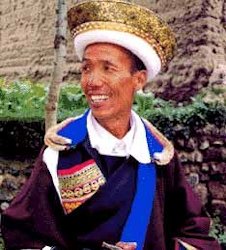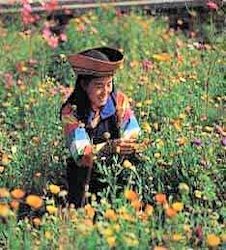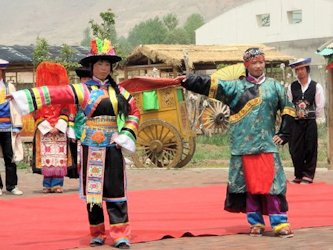|
47. Chinese Nationalities (Tu Minority) -- Minorities by Alphabetic Sequence |
|||

|

|

|
|
| Tu Gentleman | Tu lady | Tu Couple | |
|
The Tu trace their origins to the thirteenth century. They speak a Mongolian
language and are related to the Mongolians. They have two dialects and a rich
oral literature.
Originally pastoralists, they have practiced agriculture for
several centuries. Most believe in lama Buddhism, but some still adhere to
polytheistic beliefs.
The Tu (Monguor) clans once served as frontier defenders
for imperial China, which earned them limited local autonomy. The Tu are found
in Qinghai and Gansu Provinces. They are part of the Altaic Mongol ethno
linguistic group.
The Tu ethnic group, with a population of about 191,624, is
concentrated in the Minhe and Datong counties and the Huzhu Autonomous County
in the eastern part of Qinghai Province. Others live sparsely in Ledu and
Menyuan in Qinghai Province and in the Tianzhu Tibetan Autonomous County in
Gansu Province.
Most people believe
that the Dus evolved from the Duguhun people in ancient times. During their
long history, they formed their own unique group by absorbing members of the
Han, Tibetan, Mongolian, and other neighboring tribes.
|
|||
| Return to Alphabetic List On to No. 48 Minority Tujia ⇨ | |||